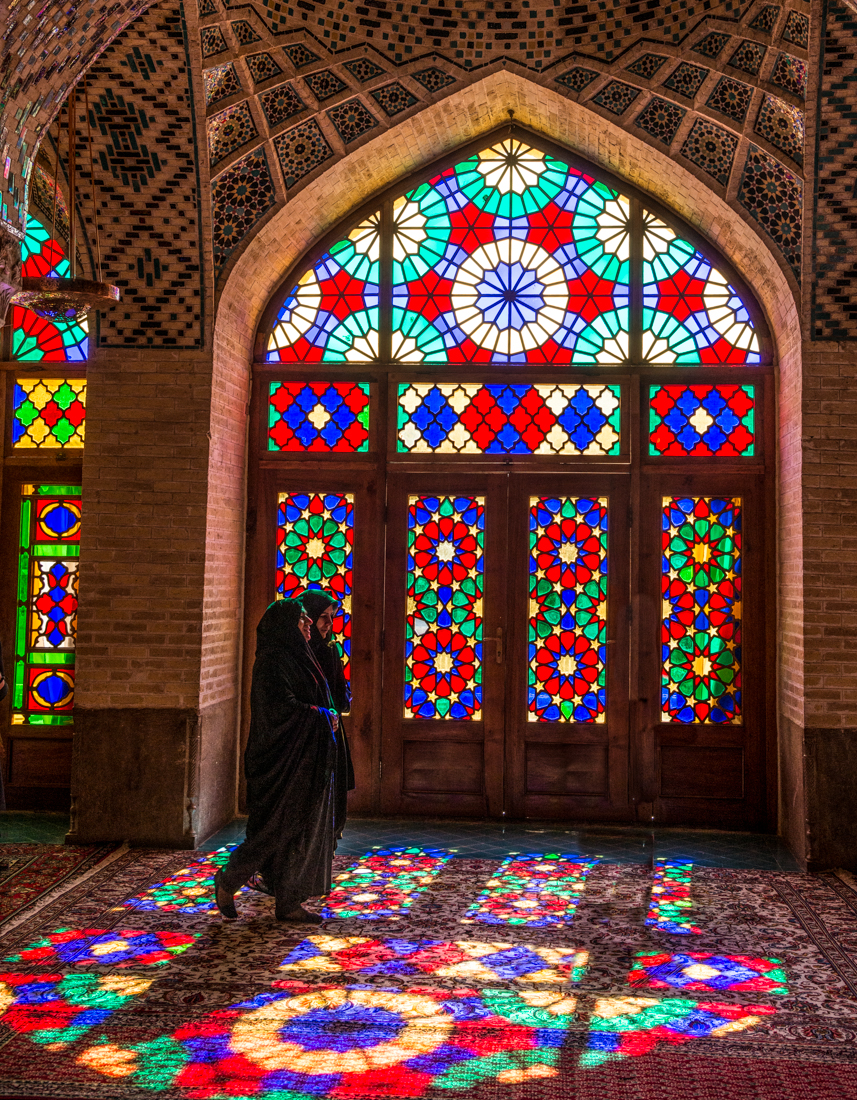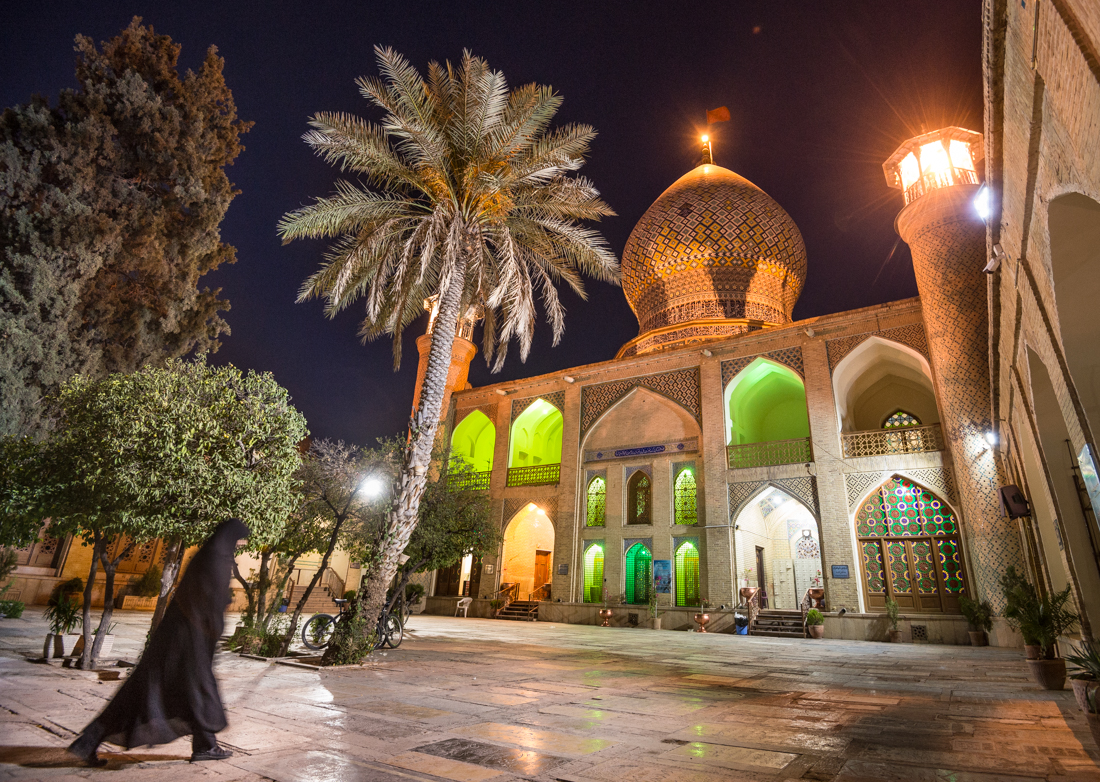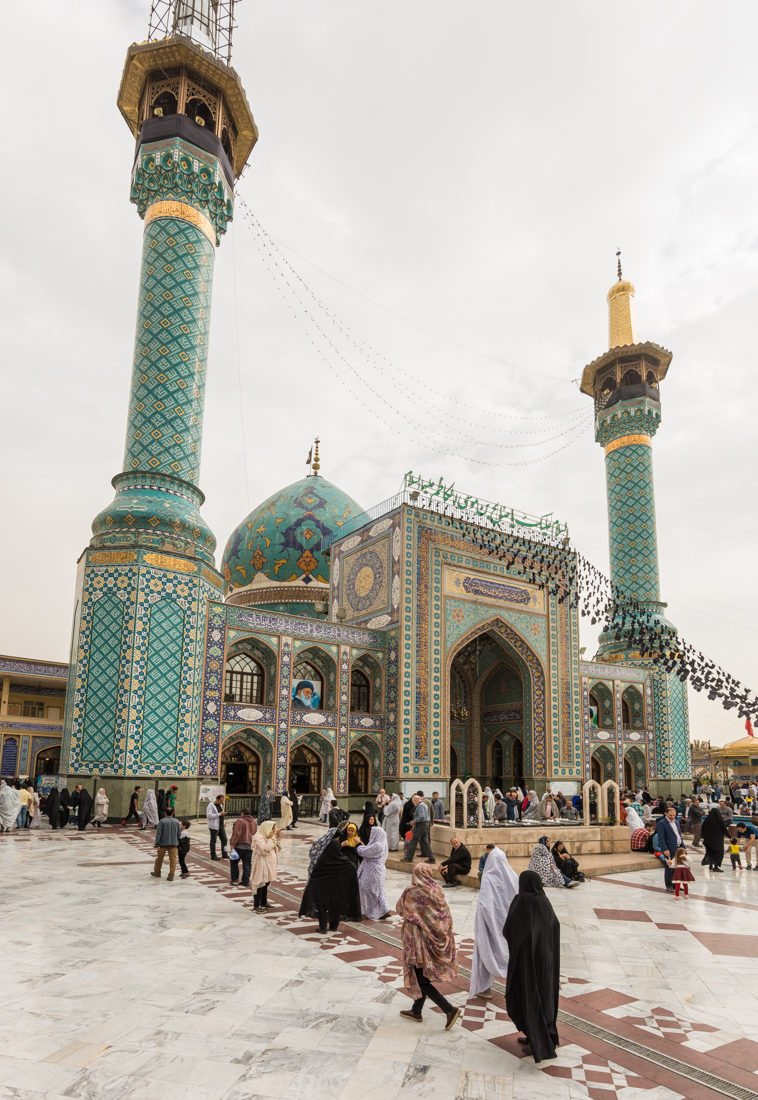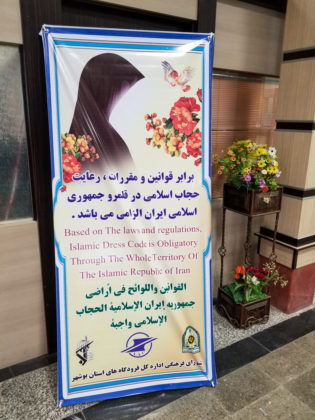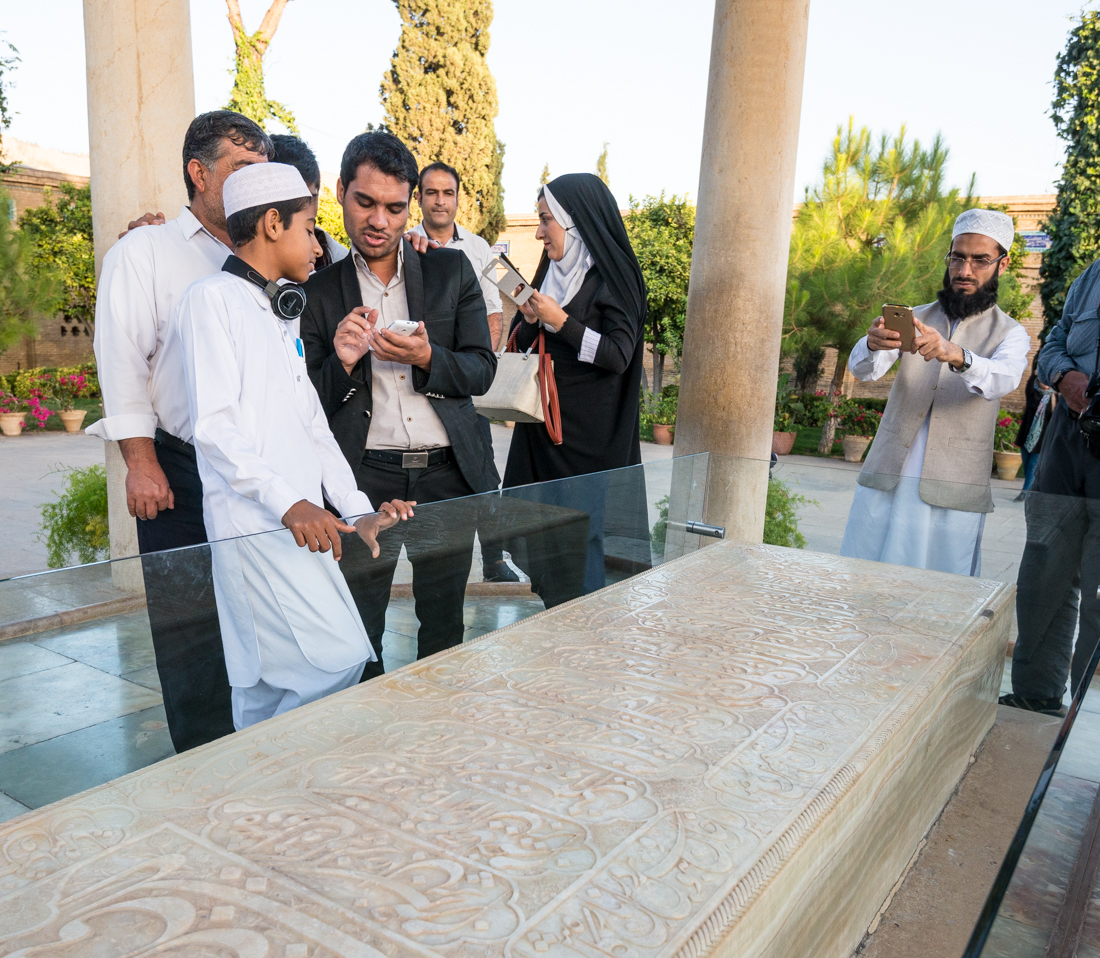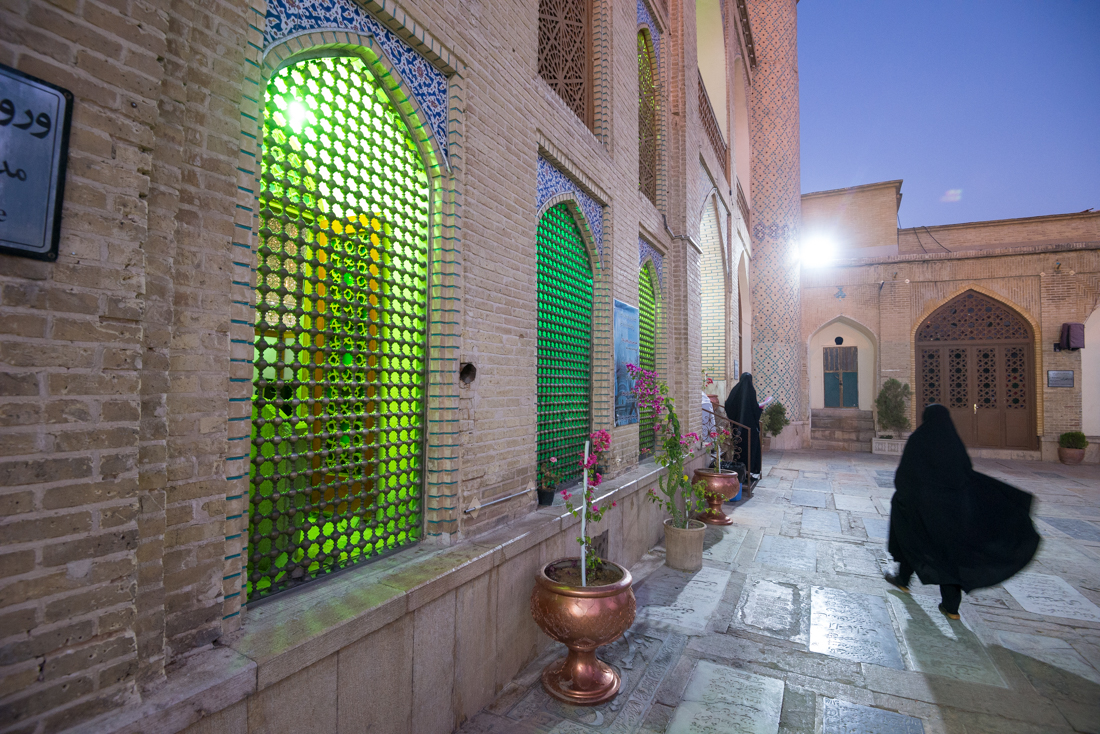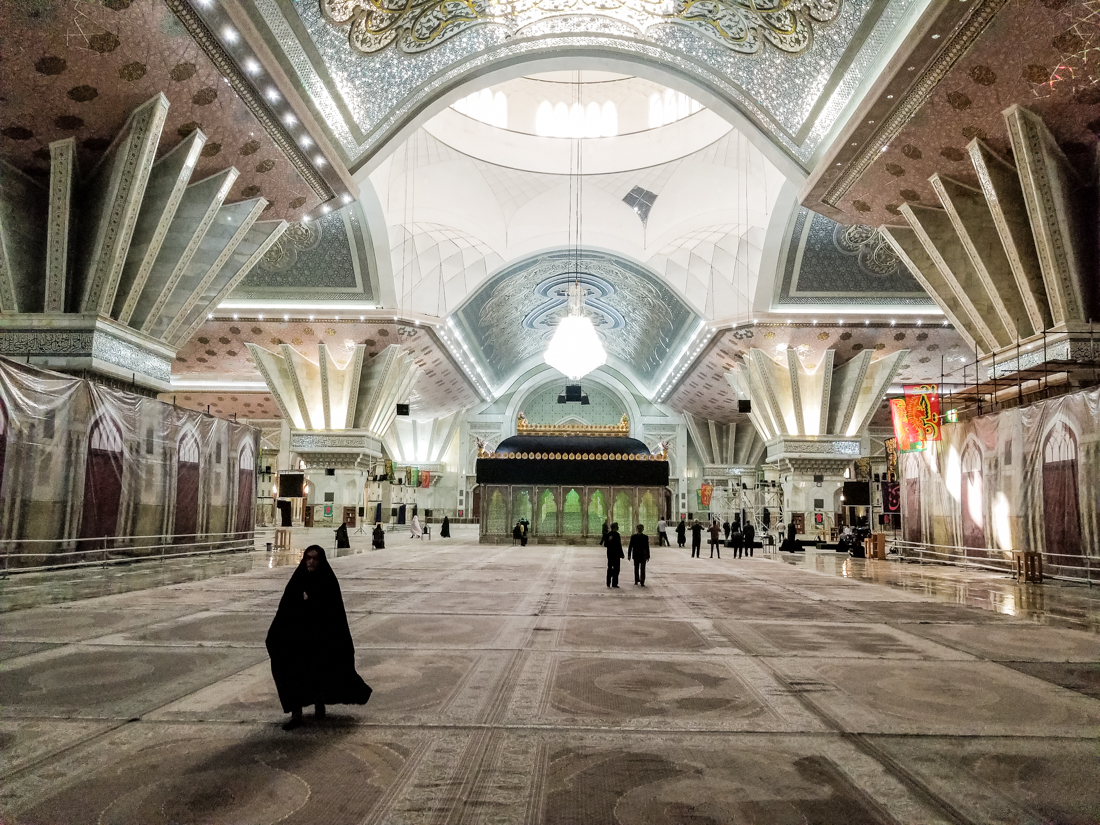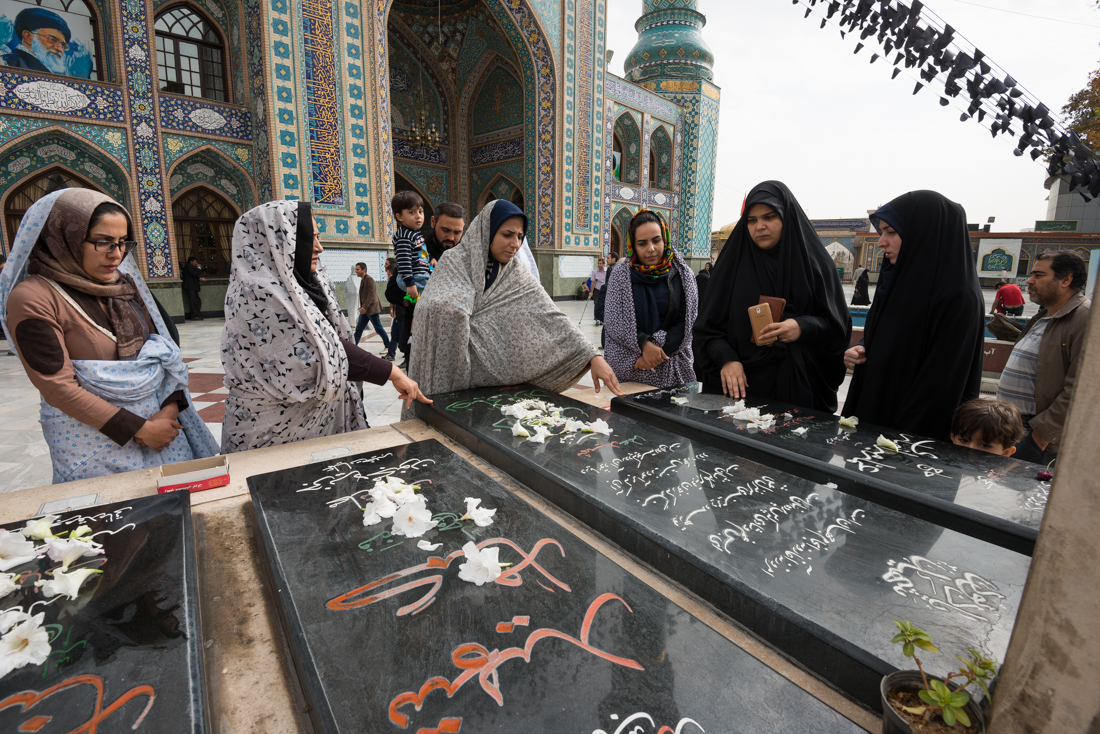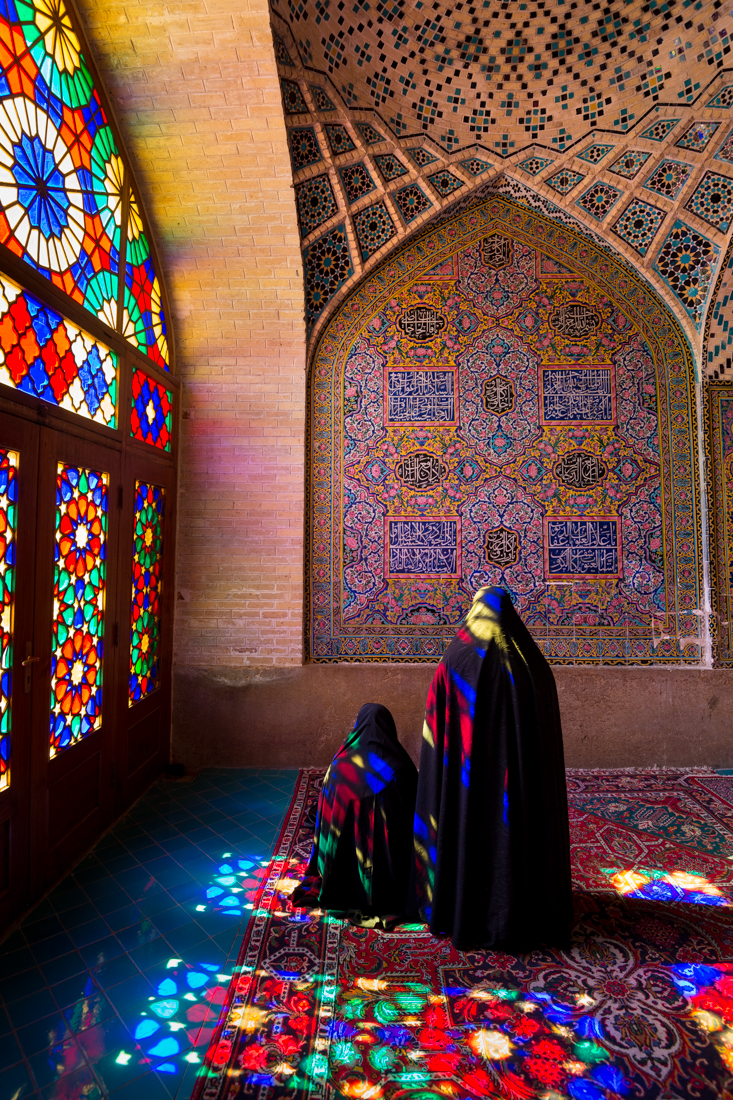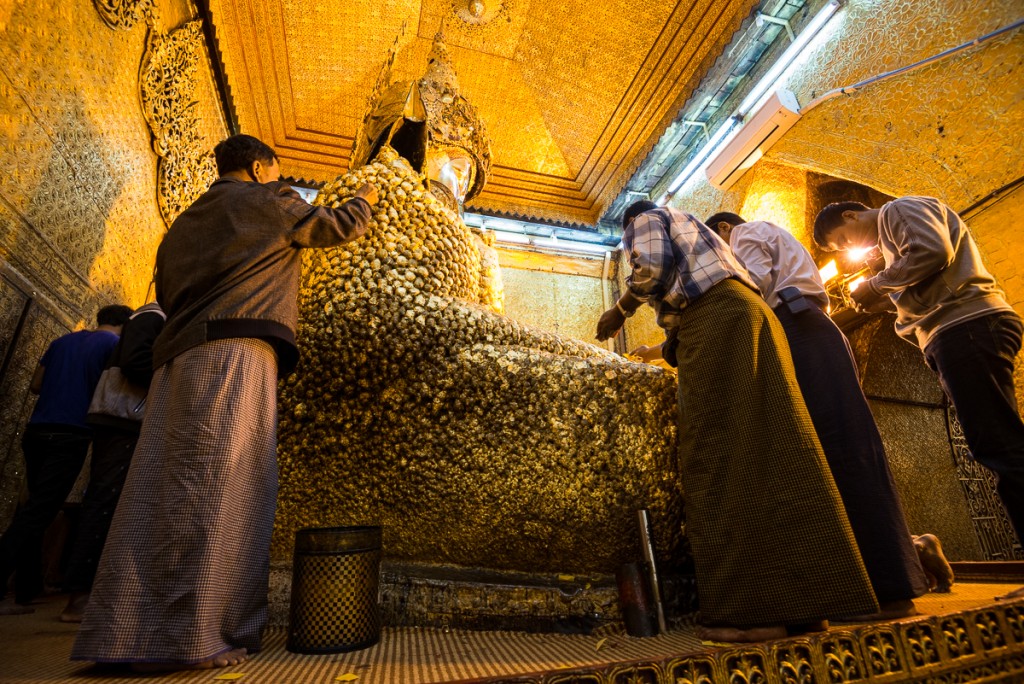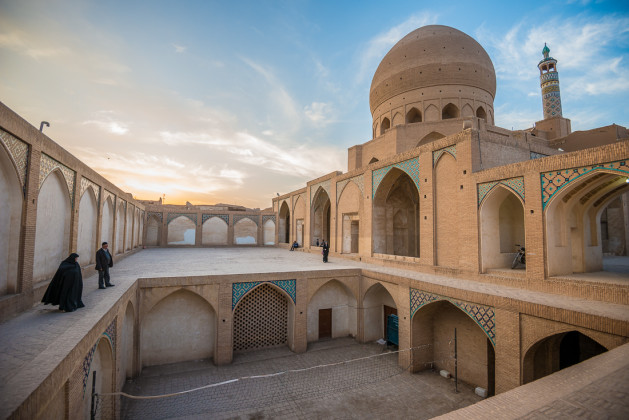#8 in a series that started here.
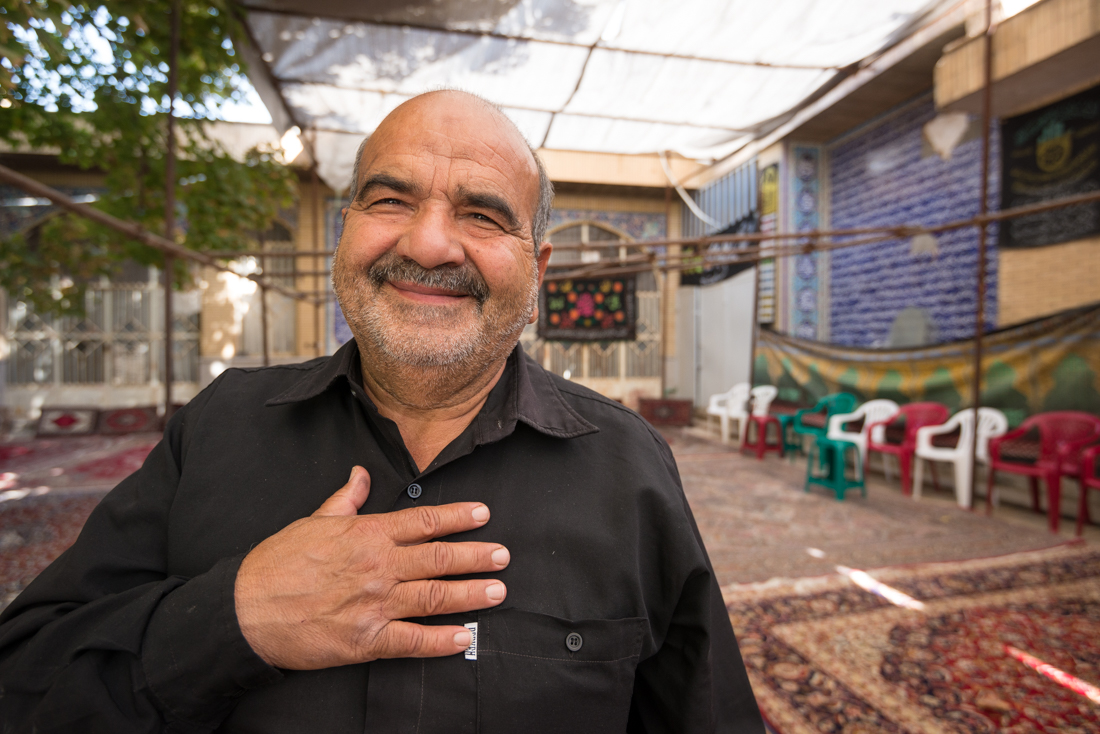
An informal mosque. When we peeked in the door during a service, someone rushed out to encourage us to come inside. Men and women were separated by a drape, and I could only go on the men’s side. There about 150 women, and about 8 men, including this very friendly guy. Of course, they brought out tea and cookies.
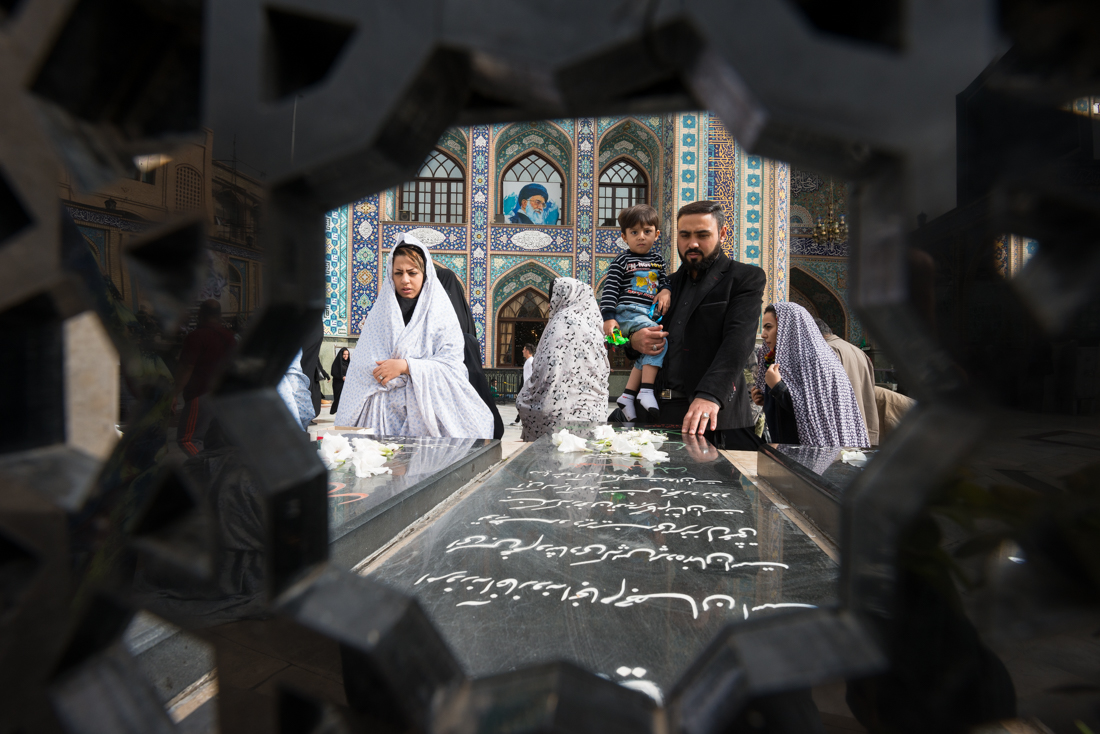
Imam Zadeh Saleh Shrine and Mosque in Tehran. Iranian Muslims spend a lot of time paying tribute to martyrs.
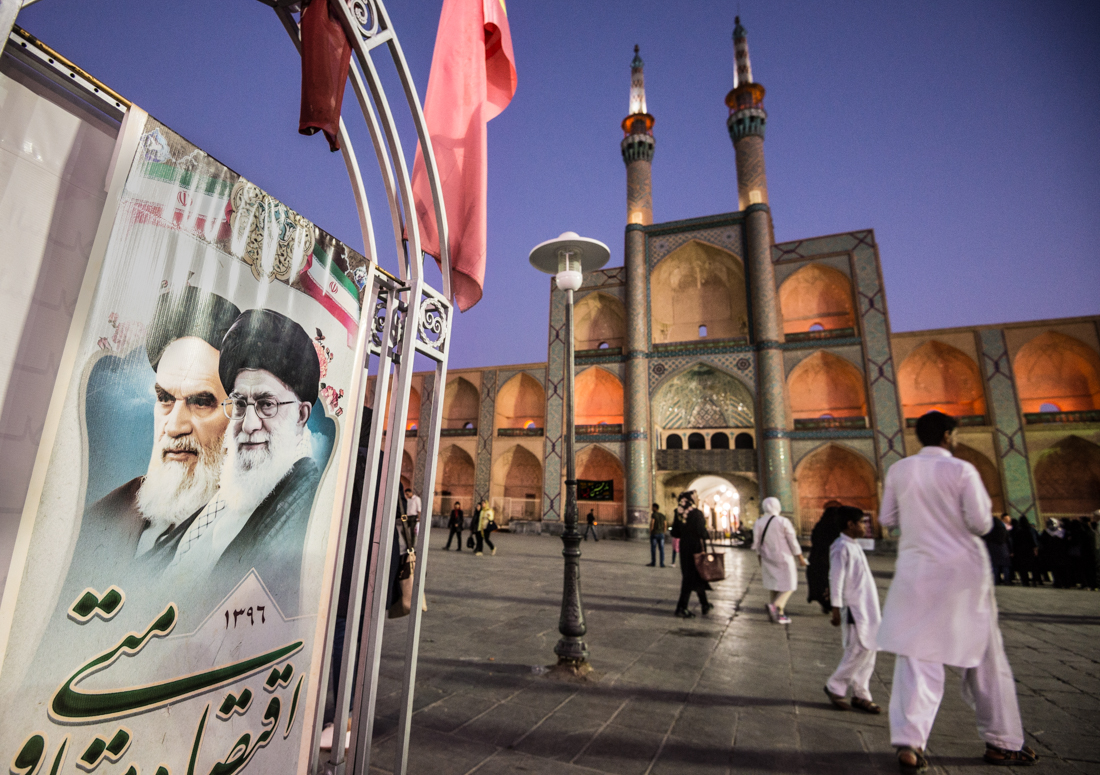
Images of Iran’s original Supreme Leader, the “Ayatollah” Ruhollah Khomeini, and its current Supreme Leader Ali Khamenei, are everywhere.
One of the first sights I visited in Iran was a perfectly preserved and functioning 17th Century Armenian Christian church, the Holy Savior Cathedral – complete with crosses and elaborate paintings of Christian crucifixion and nativity. During the trip, I saw reproductions of The Last Supper (DaVinci’s painting of Jesus and his twelve disciples) in multiple public places. I also saw large monuments and relics from Zoroastrian groups (an ancient monotheistic religion) that were prominently preserved and protected. My assumptions about how other religions fared in the “Islamic Republic of Iran” were wrong — or at least incomplete.
Unlike the radical Sunni ISIS movement, Iran’s leadership has not generally destroyed monuments or culture of other religious groups. The ancient Persian-Iranian imperial hero Cyrus the Great was known for his tolerance of the diverse practices of the people he’d conquered, and Iranians seems to take some pride in that example. The Republic’s Constitution sets aside five Parliament seats specifically for the country’s minority religions (Armenian and Assyrian Christians, Zoroastrians, and Jews), whose small numbers would otherwise leave them wholly unrepresented.
Make no mistake: Non-Muslims make up maybe 2 percent of the population. And the flip-side of those 5 reserved parliament seats is that the other 285 seats are effectively reserved for Muslims. Other minority religions – notably the Bahai and Sufi — are not recognized and thus effectively prohibited. In several ways, followers of the minority religions are treated as second-class citizens – affecting, for example, their ability to hold most public offices or inherit property. The recognized Christians in Iran are almost exclusively members of distinct ethnic groups who conduct their services in their own languages (not in Farsi), and thus they pose little risk of converting Iranian Muslims to their faiths. (According to the U.S. State Department, such conversion is still theoretically punishable by death.)
Iranian hostility toward Israel can be strong. Israelis are not allowed into Iran, and we (Americans) were told that if our passports even included a stamp from a prior trip to Israel, we would not be allowed into the country. Surprisingly, at the huge National Museum of the Islamic Revolution and Holy Defense in Tehran, there was an exhibit – complete with respectful images of Jesus and Mary and the Jewish Star of David — giving tribute to members of the “minority religions” and their contributions in the Iran/Iraq war. But just outside, the Star of David (as a symbol of Israel and/or Judaism) was part of the conspicuous label for the trash cans.
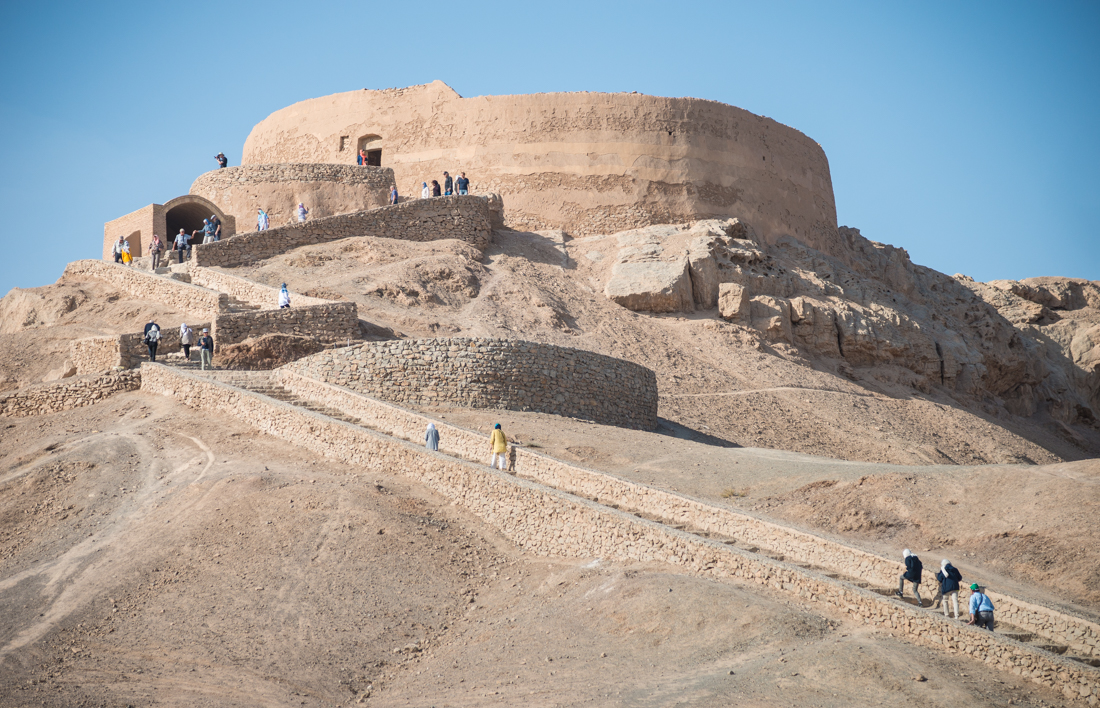
This Zoroastrian structure near Isfahan looks ancient, but it’s only a few hundred years old. It’s for ceremonial cremations — sort of. Zoroastrianism is one of the recognized minority religions in Iran.
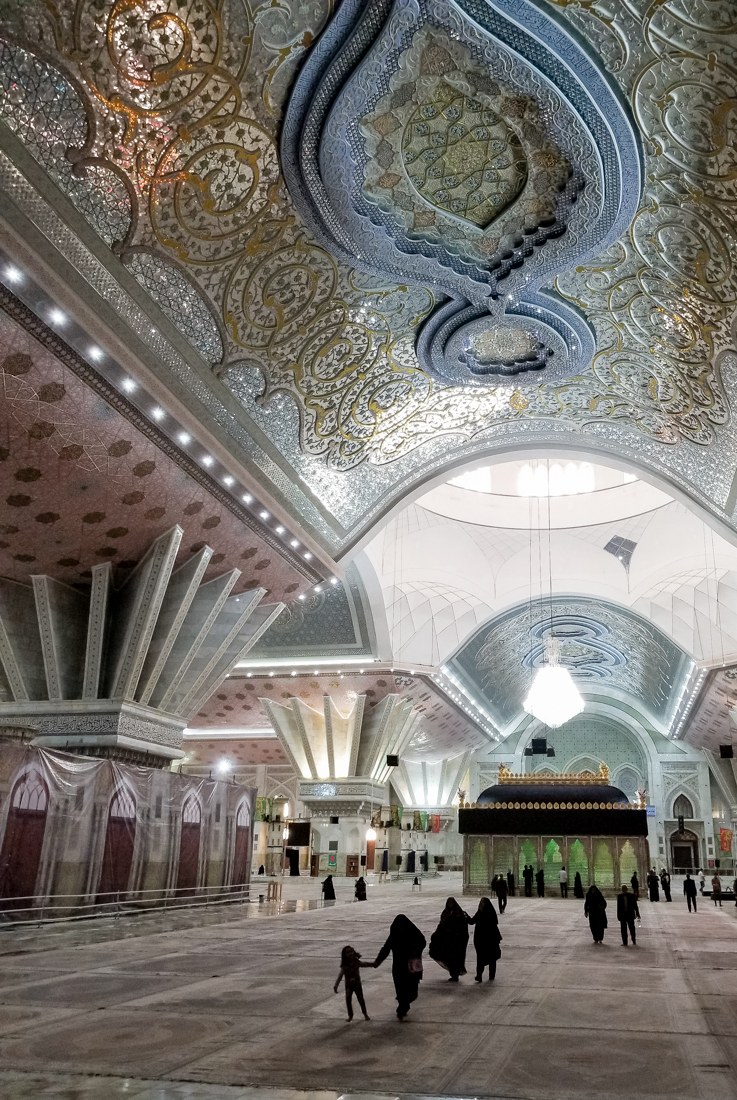
The shrine to the Ayatollah Khomeini, on the south end of Tehran. He’s been dead nearly 30 years, but it’s about half finished. It looks like a combination of 1/4 Vatican; 1/4 Galleria Shopping Mall; 1/4 Trump Taj Mahal; and 1/4 real Taj Mahal.
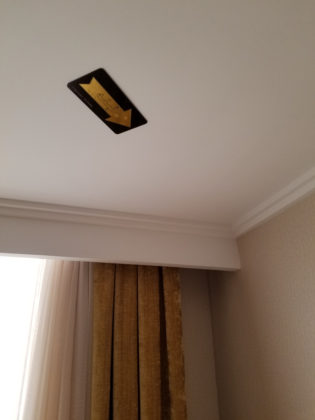
Many hotel rooms had arrows like this. They point toward Mecca so Muslims know which direction to face when saying their prayers.

A version of Leonardo da Vinci’s “Last Supper” on the wall of a diner-style restaurant in Shiraz. [Muslims believe that Jesus existed and that he was a great prophet, perhaps second only to Muhammad. Though they don’t believe in a crucifixion and resurrection in exactly the same way Christians do, they do believe that Jesus ascended to heaven and that “it was made to appear” to the Romans that Jesus was being killed by crucifixion. The Quran makes reference to an important meal that Jesus had with his disciples, though it’s not clear that the timing of that meal was necessarily on the eve of his death (as Christians believe about the “Last Supper”). So Muslims might quibble about whether Leonardo’s painting was necessarily the “Last” supper, but they’d otherwise believe and agree with its general content. That doesn’t fully explain why it’s the sole religious image on this diner wall in Shiraz, but remember that images of Muhammad are generally prohibited.]
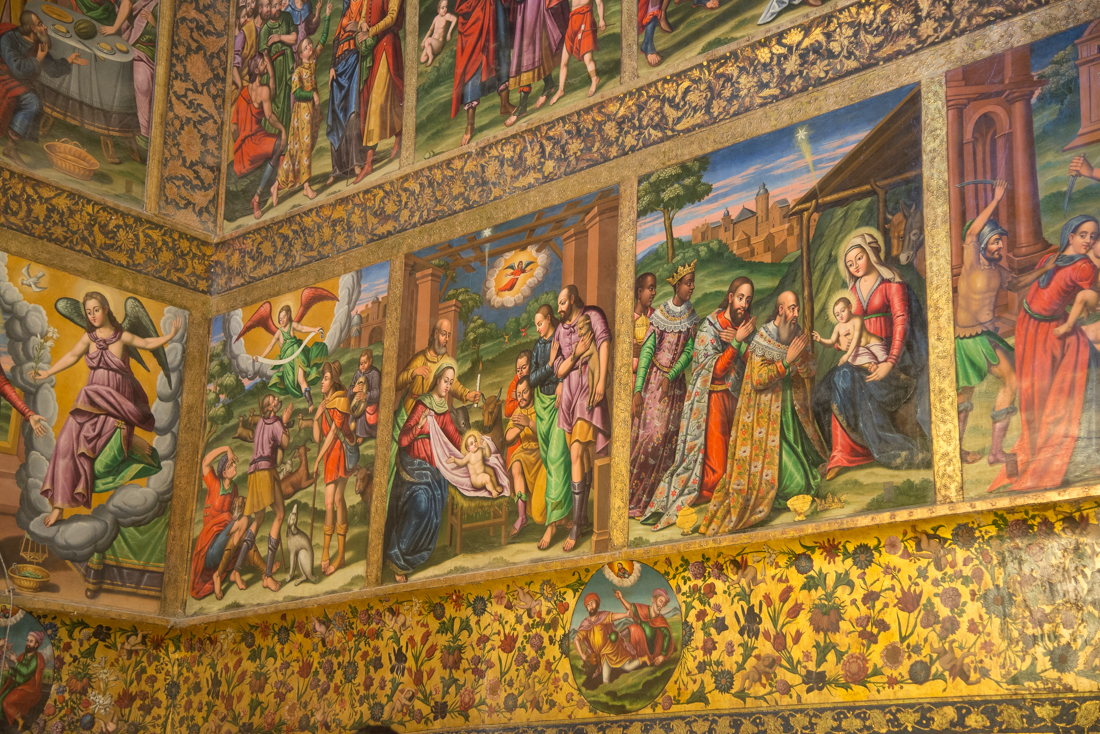
Elaborate paintings of the Christian Nativity in the 400-year-old Armenian Holy Savior Cathedral in Isfahan.
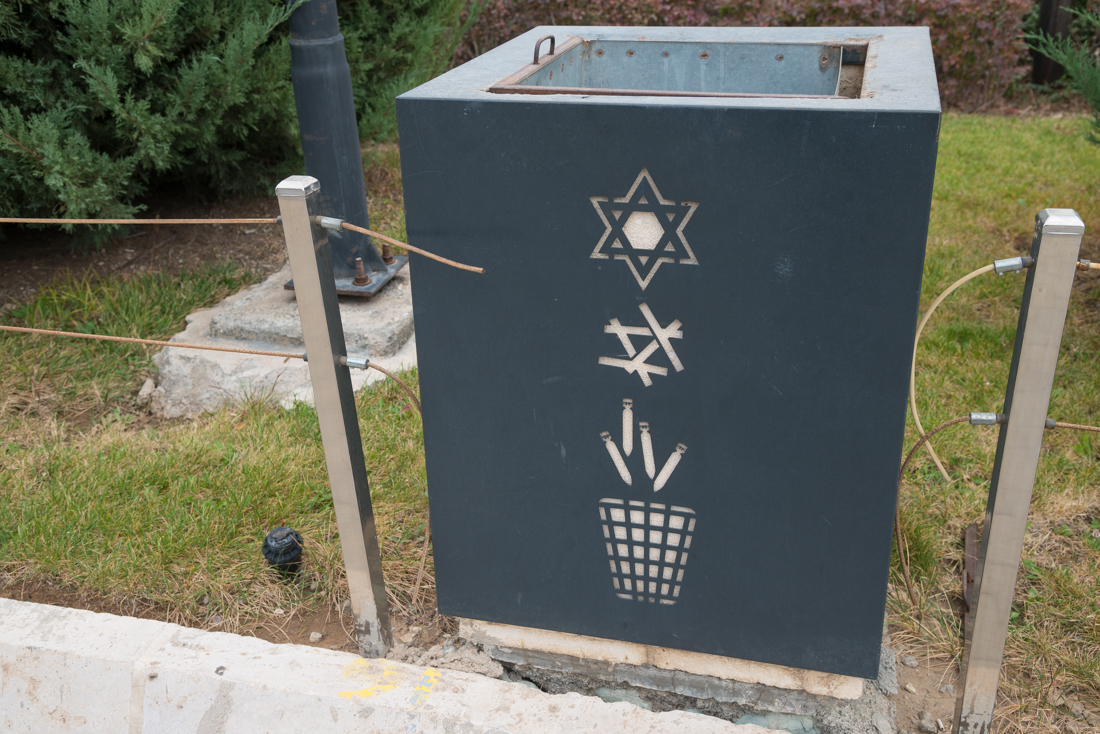
These graphics were on each of the dozens of trash cans outside the Museum of the Islamic Revolution and Holy Defense in Tehran. Somehow the Jewish/Israeli Star of David deconstructs into bombs, which then drop into a trash can. I wasn’t able to get a real explanation.
